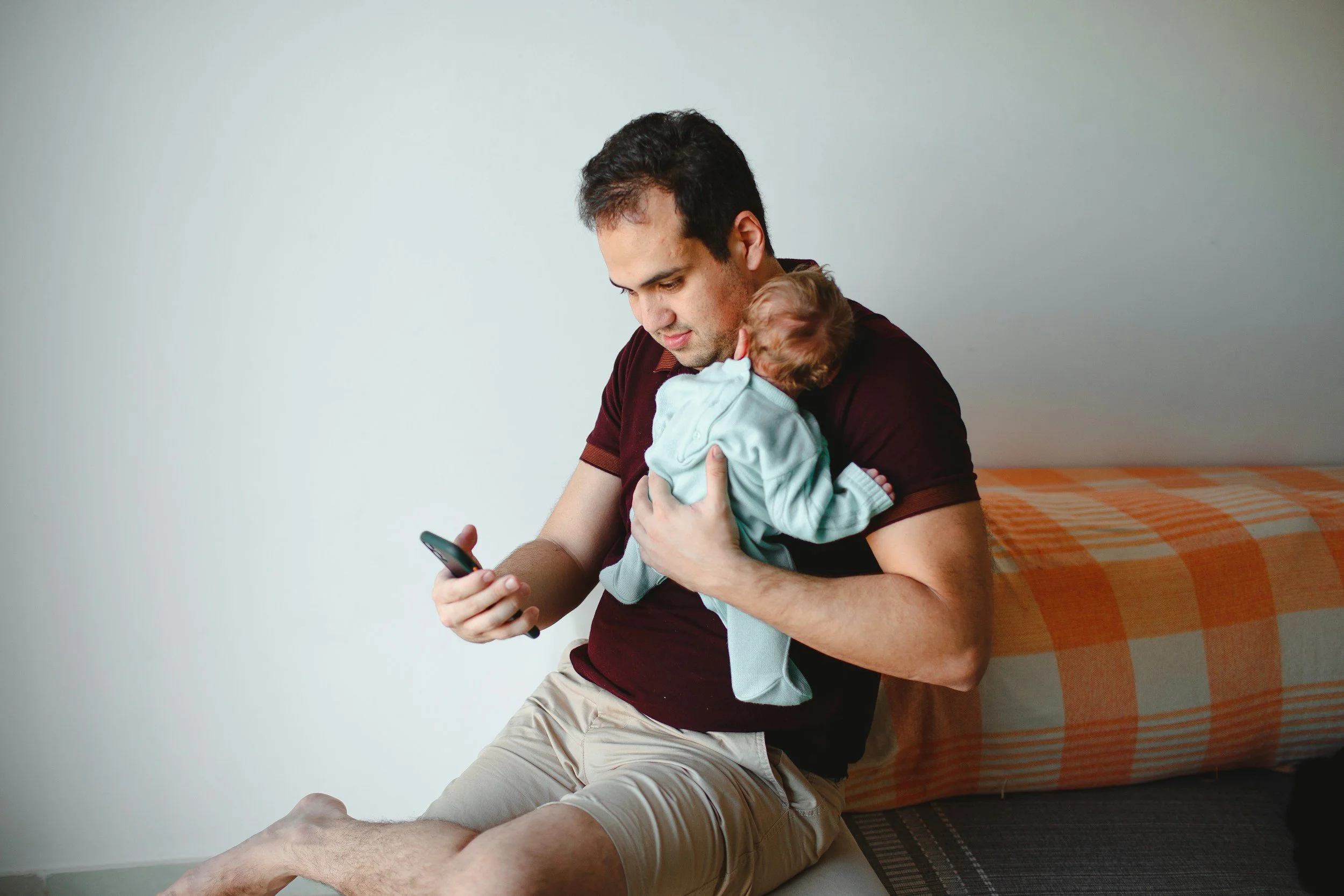As adults, we often worry about how much time our children spend on their devices. But if we pause and look honestly at our own habits, we may find that we are the ones modeling what it looks like to use a phone all day.
Recent studies by the NIH and the American Psychiatric Association confirm that most adults spend between 4 to 6 hours a day on their phones, with higher usage linked to increased stress, anxiety, and sleep disruption.
We use our phones to work, stay informed, unwind, distract ourselves, and scroll away the stress of the day. Meanwhile, most children, especially those under 12, average closer to two hours of screen time. So if you're concerned about screen use, the first place to look isn't your child, it's you.
Your Baby Is Watching
It starts early. You hold your baby with one arm, and your phone with the other. You think, “I’m right here. I’m holding them. I’m feeding them.” But your gaze is somewhere else. You’re not making eye contact. You’re not reading their cues. You’re not fully present.
Your baby doesn’t know what’s on that screen. All they know is that the connection between you and them feels fuzzy. Those moments of connection between parent and infant lay the foundation for secure attachment, focus, and social reciprocity. It’s the beginning of how they understand the world and how they connect with others.
For Young Children, Presence Equals Safety
One of the most powerful ways to raise responsible digital citizens is to model healthy boundaries with technology. Children learn far more from what we do than what we say. If we want them to put their phones down, we need to be willing to do the same.
And no, this doesn’t mean you need to give up your phone. It means that you become conscious of when and how you use it.
Here’s How to Start
Choose two routines to protect
Pick one in the morning and one in the evening. Mornings set the tone for the day, and evenings settle the nervous system. These are the most important moments to be fully available. Put the phone away. Let your children know they have your full attention.
Use what your phone already offers
Most phones now have screen time and focus features. Set app time limits. Turn off notifications during meals. Make downtime settings your default not the exception.
Invite your teen into the process
If you’re parenting a teen, don’t make it a battle, make it a challenge. Who can lower their screen time this week? Turn it into a bet. Who will win? (My guess: the teen will) At dinner or in the car, help each other answer this question: How can we all get better at noticing when we’re using our phones to escape?
Try one “no-phone” day a week
Call it a digital sabbath. A day where your phone lives in a drawer or a box. Let yourself be bored. Let your child be bored. See what emerges. Boredom is the seed of creativity and curiosity. It nudges us to explore, imagine, and invent. When we’re constantly stimulated, we leave no room for creativity to rise.
Because They’re Learning From You
If you want to teach your child how to be a thoughtful, respectful, and responsible digital citizen, the first step is to become one yourself.
Not perfect. Not screen-free. Just intentional.


